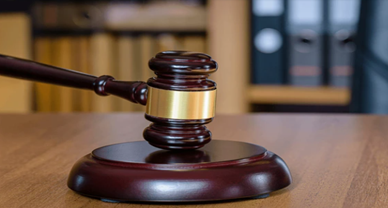Post Sale Confusion Vis-À-Vis Umbro Judgement & Arsenal Vs. Reed – Trademarks
Introduction:
The rise of globalization and increased competition has created a modern marketplace where businesses aim to stand out from other products available. The concept of Trademark plays a pivotal role in the modern market setting. Trademark law holds utmost importance for commerce, which aims to protect not only the interests of trademark holders but also the trust consumers vests in the authenticity and exclusivity of the products. Previously, the assessment for trademark infringement irrespective it is a registered/unregistered was primarily central to the question; whether confusion can arise during the point of sale, meaning thereby; whether the buyers were misled at the moment of purchase. Presently, a more nuanced and pragmatic aspect of trademark law termed as “post-sale confusion” has emerged. This concept recognizes that even when a buyer knows that they are purchasing a counterfeit/dupe product, confusion can still arise among people widely referred to as “third parties” or as “future buyers” who see the product being used after the sale.
Post-sale confusion raises an important question: does the protection of trademark stop at the point of sale, or does it have an impact on the public perception of the branded product post sale? Currently, courts and scholars are acknowledging that the potential for confusion does not disappear once a sale is final but extends to the life of product. Notable cases like Arsenal Football Club plc v. Reed and Iconix Luxembourg Holdings SARL (Respondent) v. Dream Pairs Europe Inc and another have highlighted how the law is evolving to address post-sale confusion. This blog will closely examine the doctrine of post-sale confusion, place it within comparative trademark law, and emphasize its significance in today’s markets.
The Doctrine of Post-Sale Confusion
Originally, confusion referred to cases where consumers were misled about the source of a product at the point of sale. This confusion occurred only during the purchase, not after the purchase has been made. For example, consider a consumer looking for “Brand X” athletic apparel online. They might encounter a similar brand, “Brand Y,” and mistakenly believe it is connected to Brand X because of its similar advertising styles etc, even though Brand Y is independent. If they later realize the difference, the initial misunderstanding can still harm Brand X’s reputation and customer base. This is known as “confusion at the point of sale.”
The consumer confusion under the Trade Marks law has mushroomed to a fairly new concept of ‘Post-Sale Confusion’. Post-sale confusion happens – as the name suggests – after a product bearing an allegedly similar trade mark is being utilised in the market, and the general public while in their average sightings of the day – come around that product bearing the alleged infringing trade mark. For instance, if someone buys a dupe of a luxury shoe, irrespective of the said person being misled at the time of point of sale, but post wearing the said shoe, a spectator is deceived by the appearance of the allegedly infringing mark as appearing on the product by confusing it with another brand/ trade mark. However, the same comes with a caveat that post-sale confusion must be restricted to realistic and representative circumstances, otherwise the same can result in absurdity.
In the case of Ferrari S.P.A. Esercizio v. RobertsThe defendant created kits designed to transform regular vehicles to look like Ferrari models. Ferrari objected, arguing that bystanders could mistake these replicas for authentic Ferraris. The court agreed, stating that the damage to the brand’s reputation and goodwill caused by the kit cars justified trademark protection, even if the original buyers were not confused.
Policy Justifications for Recognizing Post-Sale Confusion
The idea of post-sale confusion is based on important legislative reasons that extend beyond protection of the immediate buyer. There have been several justifications for expanding trademark protection to include post-sale scenarios:
Preservation of Brand Prestige and Exclusivity: Many brands of high status and luxury invest heavily to build an image of exclusivity and uniqueness. Their trademarks symbolize rarity, authenticity and its exclusive value. When counterfeit or unauthorized products are allowed to circulate in the market, third parties may form an assumption thinking the brand has lost its exclusivity or that its products are easily accessible. This perception can weaken the premium status of brand, damage its goodwill, and undervalue the significant investments made to maintain a high-quality image.
Protection of Goodwill and Quality Association: A trademark serves as the identifier of the original product but also at the same time serves the promise of quality and consistency. If the public future customers encounter poor-quality products with a well-known trademark, they may wrongly associate the poor quality with the original trademark owner, even if the buyer knew the goods were counterfeit at the point of purchase. Over time, these mistaken associations can resultantly fade the trademark’s distinctiveness and lower consumer expectations about quality. Therefore, protection against post-sale confusion is crucial to maintain the trademark owner’s reputation with the general public.
Prevention of Unjust Enrichment and Free-Riding: Counterfeiters by producing the unauthentic or unofficial products often exploit the brand value which is built by legitimate trademark owners, benefiting from positive brand associations without making an investment in quality, marketing, or innovation. The initial buyer may willingly buy a counterfeit; and resultantly make profit from the trademark’s reputation. The doctrine of post-sale confusion helps prevent this unfair market exploitation and unjustified competition in the market.
Post-Sale Confusion: Key Insights from Arsenal Football Club PLC v. Reed
The concept of post-sale confusion has garnered significant popularity in landmark court rulings that still holds considerable weight. The case of Arsenal Football Club plc v. Matthew Reed is noted for its in-depth explanation of how the functions of trademark law continues after the purchase and how third-party perceptions threaten the brand control. This case effectively shows how courts balance disclaimers and warnings made at the point of sale against any kind of potential confusion that may arise at a later stage.
Facts of the case: Arsenal Football Club is one of the Big 6 of the football clubs in England and has its trademark registered for its exclusive name, crest, and logos and other kinds of merchandise, and to be honest, Arsenal’s arsenal of unique brand identity having the ‘Gunners’ logo, the name ‘Arsenal’ itself and other ancillary marks are well-thought off marks, one should believe this, if it comes from a Manchester United Fan. Anyways, coming back on track, these trademarks have proven of utmost importance for the commercial success of the club, and which has allowed Arsenal to sell its official merchandise, which includes its authentic scarves, hats, and jerseys to official and licensed vendors or sellers only. Revenue or the profit which is made from this licensed merchandise was important for the club’s brand management, ensuring high quality control and that brand integrity remains the same. Matthew Reed, (respondent in present case) is a street vendor, who started selling scarves and other merchandise that featured Arsenal’s trademarks including “Arsenal,” “Arsenal Gunners,” and certain logos, near the club’s stadium. Interestingly, Respondent did inform customers that these items were “unofficial” and were not authentic Arsenal merchandise. Henceforth, buyers were not confused at the point of sale, as they knew they were purchasing unofficial merchandise of the club. The plaintiff i.e., Arsenal football club sued Mathew Reed under section 10 of Trademarks Act, 1994.
Legal Issue: The primary legal issue was whether selling unauthorized goods and despite giving clear disclaimers, violated Arsenal’s trademarks. Originally, can trademark infringement occur even if the immediate buyer was not misled, but others could be?
Findings of the Court: The case was presented to the European Court of Justice (ECJ) for initial ruling. The court provided a major clarification upon the trademark law principles. It emphasized that the primary purpose of trademark law is to make sure that the origin of goods is protected not just at the time of sale but throughout their entire commercial life. The court in its ratio stated that; once these “unofficial” scarves which were purchased from Respondent’s stall and were consumed by the buyers then as a result fans publicly, bystanders, other fans, or casual onlookers might mistakenly think that these are the official merchandise of the club. This act of respondent resulted in harming the distinctiveness and commercial value of the trademarks of the club, damaging Arsenal’s reputation and undermining its licensing program. Because of this, the ECJ ruled that using a trademark, even if buyers knew it was unauthorized, would still be considered as infringement of the original trademark, as it compromised the trademark’s essential function and its exclusivity.
Legal Significance: The decision of the court in Arsenal v. Reed made a significant change in the trademark law. It recognised that trademark protection extends beyond initial transactions to how the general public perceives the goods carrying the mark once they are in circulation in the market. This case highlights that the negative effects of unauthorized use extend beyond the direct buyer-seller relationship, affecting third parties who encounter the product and make relative assumptions about the origin of the product. The grounds of asserting disclaimers at the point of sale do not help in clearing up confusion for future customers, the ruling strongly upheld the role of trademark; is the representation of quality and origin throughout the commercial life of product. This was a significant advancement in aligning the trademark protection with the realities of a brand-focused economy.
Extending the Doctrine: The Case of Iconix v. Dream Pairs (Umbro Judgment)
To further explore how courts have approached the concept of post-sale confusion, consider the case of Iconix Luxembourg Holdings SARL (Respondent) v. Dream Pairs Europe Inc and another. The present case illustrates how the association of a trademark with a product after its sale can result in harm to the reputation of the brand and leads to consumer confusion, even when the original buyer is fully aware of the unofficial status of the product. The Umbro case draws attention to the practical challenges of maintaining brand perception in a market where replica goods circulate openly and are seen by many future customers.
Facts of the case: Iconix Luxembourg Holdings SARL (Iconix) is the owner of the brand “UMBRO” ‘’, which is a well-known brand in the UK. Umbro is internationally recognized for its authentic sportswear, high-quality football kits and other sporting equipment. Umbro has built a strong reputation for itself subject to its performance, style, and authenticity in the sports apparel market for a long period of time at a global level. To maintain and uphold the standards of its brand reputation, Umbro has licensed its trademarks only to approved manufacturers and retailers, to ensure strict quality control and to protect its unique brand identity. Dream Pairs Europe Inc (Dream Pairs) (respondent) owns the Dream Pairs footwear brand, founded in the USA, known for its exquisite collection of footwear, the mark in dispute was ‘’
.
Legal Issue: The dispute in the present case involves the issues of similarity between the logos of two brands which were displayed on their footwear products. The main central question to this case was; whether post-sale confusion in a suit for trade mark infringement, an actionable claim.
Findings of the Court: The court took a practical approach at the trademarks, decoding that trademark protection lasts beyond the initial sale. The Hon’ble Court affirmed the contention that ‘it is possible in an appropriate case for use of a sign to give rise to a likelihood of confusion as a result of post-sale confusion even if there is no likelihood of confusion at the point of sale’, while rejecting Dream Pairs’ submission that only post-sale confusion affecting or jeopardising the essential function of a trade mark as a guarantee of origin at the point of a subsequent sale or in a subsequent transactional context can amount to an actionable infringement. Dream Pairs’ further submission that ‘before there is an actionable infringement the post-sale confusion must result in damage at the point of sale or in a transactional context in the sense of influencing consumers when they make a choice with respect to the goods or services in question’ was also rejected. In fact, an interesting take on ‘Purchasing public’ vs ‘Public’ is also mentioned under Para 89 of the judgement. Although, the judgement of lower court was upheld and it was concluded that the Appellate court was not in power to touch the discretionary relief which was given by the lower court.
Post-sale confusion is becoming more important in global trademark law and as a nuanced aspect of liability theory. The renowned cases of Arsenal v. Reed and the Umbro decision are the witness that trademark rights extend beyond just point-of-sale confusion, aiming to protect the public perception of branded products with an initial aim to uphold the exclusivity and authenticity of the brand. In a market where reputations spread quickly through the presence of social media and counterfeit and replica items are present everywhere, it’s essential to maintain the integrity of trademarks throughout a product’s public life and its commercial value. In a nutshell, post-sale confusion reflects the modern idea that a brand goes beyond names or logos; it represents a living public story that society continuously observes, evaluates, and appreciates. Trademark law must change from time to time to protect the value not just at the point of sale but in all situations where the brand appears.
Author:– Riya Maggu, in case of any queries please contact/write back to us at support@ipandlegalfilings.com or IP & Legal Filing.



